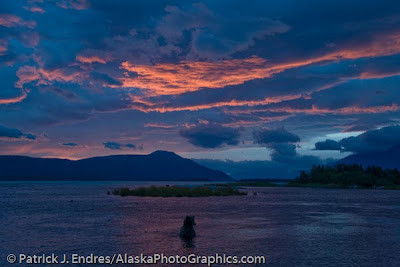The dog mushing season is about to unfold in Alaska's interior. The Yukon Quest, a 1000 mile race between Fairbanks, Alaska and Whitehorse, Canada, begins on Saturday Feb 8th. Following that will be many sprint races at the Dog musher's race grounds and the North American Limited and Open series in March. More daylight and warming temperatures entice people outside.
Dog mushing is a fun sport to photograph but sunny conditions on white snow can make for contrasty images. With a digital camera, it is easy to check your exposure against the histogram, shoot on manual, and go from there. Lower ISO settings and "exposing to the right" optimizes shadow detail and will give the most ability to boost the shadow areas in the RAW processing. In this case, I needed a little more depth of field, and a pretty fast shutter speed to stop the action in the dogs. There is a always a compromise to be made, since as you can see, that even at f10, there is not a lot in focus!
 Open North American dog sled race, Fairbanks, Alaska
Open North American dog sled race, Fairbanks, AlaskaCanon 1Ds Mark II, 300mm f2.8L IS, 1/640 sec @ f10, ISO 500




























